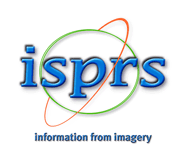Towards Urban Heat Loss Modeling Using Building Digital Twin
Keywords: Thermal Mapping, Urban Digital Twins (UDT), Urban Heat Loss, Building Efficiency Modeling
Abstract. Seventy percent of global greenhouse gas (GHG) emissions originate from urban areas, with urban heat loss contributing significantly to energy consumption (UNEP, 2020). Digital twins offer a potential solution and insight into the problem and its causes. This is a study started as an undergraduate Engineering Capstone Project with a collaborative effort between the University of New Brunswick and the National Research Council of Canada to develop a workflow to aid thermal efficiency modeling using Digital twins. This project uses the University of New Brunswick (UNB) Fredericton campus as a case study to capture UAV, nadir perspective LiDAR, Panchromatic imagery and long wave infrared (LWIR) thermal imagery. The workflow includes 4 major steps following the preprocessing: (1) creating point clouds from the LiDAR and Panchromatic sources, (2) merging point clouds using grid-based segmentation and iterative closest point algorithm (ICP), (3) classifying the point cloud using Point CNN networks aided by manual refinement, and (4) overlaying thermal data. The resulting digital twin achieved a high level of spatial alignment accuracy, with 95% of points falling on building surfaces falling within an 11 cm tolerance as assessed by quadric cloud-to-cloud distance. Semantic classification performed using Point CNN and faster R-CNN object detection identified façade features such as windows and doors with a precision of 91.8% and an F1 score of 83%. Thermal data was successfully integrated and converted to approximate temperature values, enabling further analysis of surface heat behavior and laying the groundwork for future energy modeling applications. This case study demonstrates a scalable framework for high-detail drone based digital twin development with practical relevance to urban thermal efficiency analysis.





